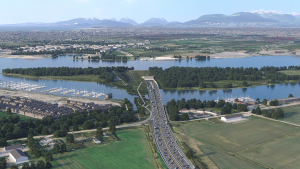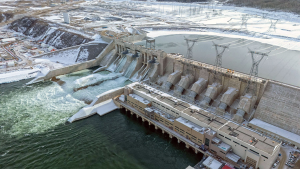Founders of Niricson, a Victoria, B.C.-based technology company, have developed a novel drone-based collection and damage-assessment software system to inspect and detect problems with aging infrastructure.
The system was recently used to inspect dams for BC Hydro and could soon play a major role in maintaining aging bridges, tunnels and other types of infrastructure across Canada, the U.S. and around the globe.
“We started with dams but the next thing we’re doing is going into bridges and tunnels, even nuclear power plants, water tanks, all types of concrete structures, and then slowly going to steel and timber structures as well,” says Harsh Rathod, co-founder of the company. “We can apply it to any type of asset.”
The system uses visual, acoustical and infra-red heat sensing to get an idea of what it’s like below the surface of a structure and detect cracks, voids or other problems in the concrete. Drones fly around large civil infrastructure projects and collect the information using an onboard acoustic recorder, optical camera and infra-red camera.
The data is analyzed in real time using the company’s software. From the information provided, inspectors can tell the width, length, depth and overall significance of the defects and, if necessary, take immediate action to repair them.

“We collect thermal data and acoustical data,” explains Rathod. “It’s not just the surface level but also sub-surface. The thermal data allows us to go a little bit deeper, so we’re looking at about five millimetres up to 50 millimetres from the surface and acoustic allows us to go 200 millimetres from the surface. That’s just the start. Our goal is to go hopefully up to 30 inches so that would be way deeper.
“The drone goes out there and actually taps the concrete surface and collects the sound waves from the surface and basically the sound waves penetrate deeper and provide the characteristic of the material.”
The software is proprietary and was developed three years ago by Rathod and his PhD supervisor Rishi Gupta. By running the data through the software, they are able to provide an assessment of the material.
Using a drone to collect data is much safer than traditional labour-intensive methods of assessing structures, he notes. For example, crews often have to hang over bridge decks suspended by ropes to analyze the surface of concrete and tap a structure. The job can be dangerous and the reports are highly subjective.
“With this we don’t need to go out there in the field,” says Rathod. “We just partner up with drone-operating companies and they collect the data.”
The system can also be used to track damage over time so civil engineers can plan preventive maintenance.
Rathod was a civil engineering PhD student at university when he developed the system. He’d made research breakthroughs integrating robotics and artificial intelligence to inspect aging infrastructure and had been working on technology to assess the condition of civil structures.
He was driven by a disaster that occurred in India in 2016 when a 100-year-old bridge was swept away by flooding of the Savitri River, claiming nearly 30 lives. It was a bridge that members of his family used for commuting daily. None of his family was injured but it was discovered that the bridge collapse was caused by lack of proper inspection. It inspired him to find a way to prevent future tragedies.
Rathod picked up the pace of his research and this year formed Niricson with Seattle-based Aki Tomita. They now have 11 people on the team and recently completed a round of fundraising for $800,000. The funds will allow the company to continue developing its technology to open new markets.
“I decided to take this to the next level and at the beginning of this year I formed this entity. I basically pitched it to one of the asset owners, BC Hydro, and did a quick test on their hydro dam and it went really well.”
Since then, the company has picked up two more projects with BC Hydro. It has signed contracts with some utilities in the U.S. and Canada and is also trying to arrange partnerships with engineering consulting firms.
Rather than wait for a disaster to occur, Rathod hopes the technology can be used to avoid future problems. He wants to take the system to the next level and use it to do predictive analytics for clients.
“Based on the performance over the years and the data we’ve been collecting, we can actually predict some of the problems that civil engineers can anticipate. What we would like to do is prevent and predict both together. We would like to predict way ahead in the future. That’s where we are really going.”











this is fascinating stuff! but a small nit: “the thermal data allows us …” should be “the thermal data allow us …”